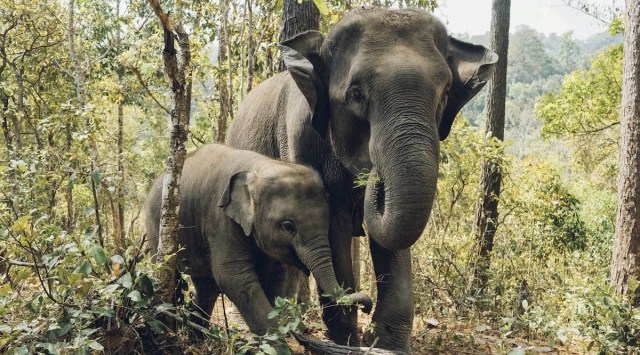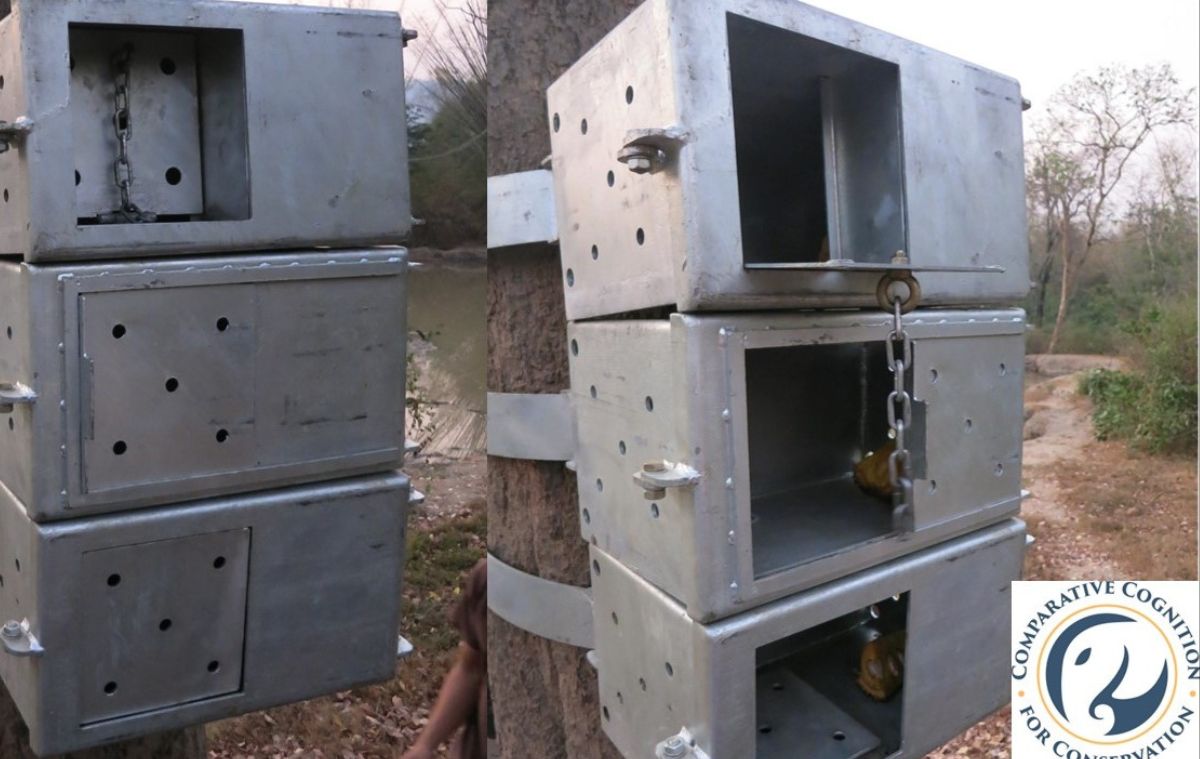© IE Online Media Services Pvt Ltd
Latest Comment
Post Comment
Read Comments
 Elephant intelligence: Cognitively, jumbos are considered at par with whales, dolphins, porpoises and primates.
Elephant intelligence: Cognitively, jumbos are considered at par with whales, dolphins, porpoises and primates. Elephants hold the largest brains among land animals, packing over 250 billion neurons. Humans, in comparison, hold 86 billion. It then comes as no surprise that jumbos are innovators, especially in cases of problem-solving and the use of tools.
In a study published on Animal Behaviour, wild elephants at Thailand’s Salakpra Wildlife Sanctuary have been observed to unlock puzzle boxes to access food: pieces of funky-smelling jackfruit. Conducted in Kanchanaburi—4h from Bangkok—the study placed motion cameras to watch 77 elephants in the wild, waiting to see if they would approach the three new boxes placed in their habitat. Was the fruit inside worth the hassle?
 It seems it was. Over six months, 44 elephants approached the boxes, interacting with them in novel ways. And much like humans, they chose personal and innovative ways of finding a solution.
It seems it was. Over six months, 44 elephants approached the boxes, interacting with them in novel ways. And much like humans, they chose personal and innovative ways of finding a solution.
Depending on the chosen compartment, a box could be unlocked by pulling a chain so the door opened towards you; pushing the door into the box; or sliding the door to the right. Eleven elephants were able to find their “aha moment” and solve one compartment type, while eight solved two types. Five elephants solved all three types, tagged as the “most innovative”. As with humans, practice made perfect—the elephants who interacted with the puzzles more often, and with greater persistence, were more successful. Catch a glimpse below (swipe to slide two):
View this post on Instagram
In conversation with The Indian Express, first author Sarah Jacobson explains the ideation and elephant behaviours seen in this study. Answers have been lightly edited for clarity:
Puzzle boxes were a novel idea to test smarts. What inspired their design?
We chose doors that opened relatively simply for this initial assessment of elephant innovation. They opened using actions which elephants typically use while foraging. One door required them to pull with the trunk similar to how they would pull a branch, the slide door could be opened using an action similar to how an elephant may strip bark off a tree, and the push door required a push by the body or head similar to how they might push down bamboo.
Why was jackfruit the reward?
Jackfruit was selected for its strong smell and because we had heard that elephants favoured it.
 The study’s steel puzzle boxes, whose opening mechanisms the elephants had to work out. Courtesy: Sarah Jacobson
The study’s steel puzzle boxes, whose opening mechanisms the elephants had to work out. Courtesy: Sarah Jacobson
How patient were the elephants? Humans get quite frustrated when stuck on a puzzle.
Their behaviour varied a lot depending on the individual. Some elephants interacted with the box with more delicate, precise trunk actions while others would push hard with their head or body and even try to bite the box corners to get to the jackfruit. Luckily the steel held up well under that type of pressure!
The only damage was one of the pull doors was bent from an elephant who pushed down on it with his foot. We also saw differences in patience where some elephants spent over five minutes interacting with the box, while others would give up after 30 seconds of investigation.
Did you observe any knowledge sharing? Did one elephant teach another how to solve a box?
From the videos we analyzed, there was only one instance of an elephant interacting with the box a second time after watching another open a door. In this case, she did solve the door the next time she came to the box. This could be due to learning from observation, but because we only have one example, we can’t say for sure. We hope to study potential social learning with this puzzle box in the future.
Did an elephant’s age play a role in whether (and how) they innovated?
Our analyses showed that there was no effect of whether an elephant was a subadult (sexually immature) or adult on their initial decision to interact with the box. Only two calves interacted with the puzzle box at all…that does indicate that overall older elephants seemed to be more interested. When looking at overall innovation (how many of the three door types were opened) across all interactions, subadults solved fewer doors than adults. So perhaps older individuals are more innovative or potentially more focused on the puzzle box than younger elephants.
Elephant intelligence is not a new or contested topic—the pachyderm is largely accepted as at par with cetaceans (whales, dolphins) and primates. Asian elephants (Elephas maximus) in particular have shown an ability to be creative. In 2011, scientists tested three of these gentle giants for “insight”: the capacity for spontaneous problem solving without trial and error.
Placing food overhead, the study tested whether the elephants would use sticks or other tools to obtain them—and a seven-year-old male did. By moving a large plastic cube, on which he then stood, the elephant reached his reward. When the cube was removed, he applied the idea to other objects, stacking them to reach the reward.
Studies before this had failed to demonstrate this ability for insight. 2011’s researchers then concluded that it was not due to a lack of intelligence, but due to the nature of the tasks. As elephants would have to hold tools with their trunk, it would limit the trunk’s use as a sensory organ, affecting their chances of success.
Given that human-wildlife conflict is rampant, a study on elephant intelligence “informs our understanding of…how well elephants may be able to adapt to, overcome or avoid increasingly frequent interactions with humans within their natural habitat,” writes Jacobson. The Asian elephant is considered ‘Endangered’ since 1986 on the IUCN Red List, with about 30,000 individuals left in India.
Sarah Jacobson is a Ph.D. candidate at The Graduate Center, City University of New York and a member of the Comparative Cognition for Conservation Lab, Hunter College, City University of New York.




